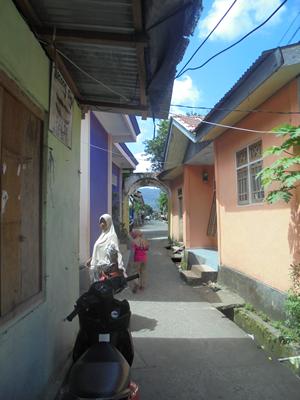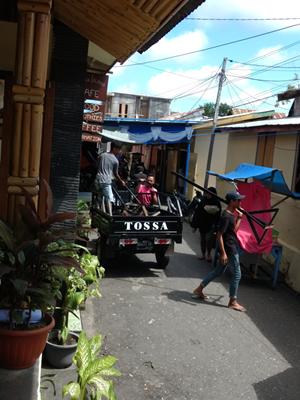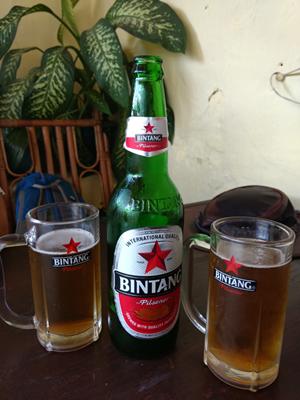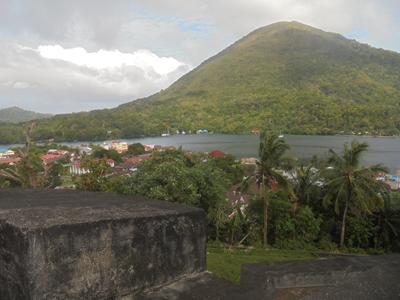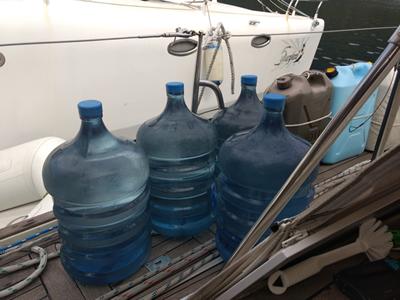Exploring Banda Neira

|
Sunday 6th August 2017 A few photos from our time in Banda Neira.
Kenari – almonds – drying outside a shop in
the sun. Schoolchildren,
always ready to pose.
A backstreet. A
rubbish bin made from used plastic water bottles. One of the locals, Maga, had set up a waste recycling system
which gave schoolchildren and their families monetary rewards that could be
used towards education costs or household bills like electricity. It was
working well and the amount of plastic rubbish was much reduced on the
island. At the beginning, Maga had stored the recyclables in his home
until they could be cut up and then sent on the boat to a recycling plant in
Sulawesi. The project worked so well he ran out of space for his family,
and eventually the community leaders allowed him use of an empty house
for storage. It was good to hear that his project had the support of the
local community.
Children marching. Interesting
name for a truck!
Setting up food stalls along the road down to the jetty, ready
for the arrival of the big ferry.
We tried the local food and beer in a couple of the restaurants.
Steve tried Aru-aru, Bandanese curry. Good, but a tad spicy. Good job they had cold Bintang to take away the heat!
We walked up to Fort Belgica, built in the 17th
century to protect the island and its nutmeg plantations, and recently restored.
The views from the top were stunning.
Across the tops of the houses to the volcano. Steve
posing at what seemed to be a sentry post. On one day we took the dinghy out and snorkelled by the
island at the entrance, and then went over to the base of a lava flow for more
snorkelling. The depth went very quickly from a few metres to many, and
there was a variety of coral and colourful fish to see at the drop-off.
Steve was trying out the go-pro, but the images in no way reflected what we saw,
so no underwater pictures sadly. More practice needed. And then before we knew it we had been here a week and it
was time to move on. One job we needed to do before leaving was to top up
our water tanks, and as drinking water here comes in plastic bottles, that’s
what we had to use. With so many boats in close proximity, and no idea of
what effluent may be discharged into the bay from onshore, we decided against
using the watermaker whilst here.
Fresh water had to be bought in large bottles, at 15,000
rupiah (90p) each, and collected from the dock by dinghy.
They were not light to lift on board – and we
needed 15 of them to top up our tanks. Next stop was to be Hoga Island in the Wakatobi chain, south
east of Sulawesi, and at some 380 nautical miles away, it would be a 3-day
passage. We would leave after breakfast in the morning. |


